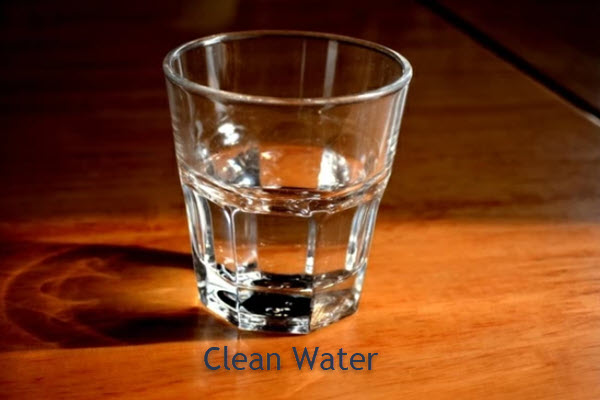Clean water is a basic need that all your employees should have access to at the office. Your office water quality should be safe and potable.
Drinking contaminated water can have your employees taking frequent ‘few hours off’ to sort out stomach issues.
But it could be a lot worse than that. Many water contaminants can cause serious health issues for consumers.
This article will make you familiar with different water contaminants. It will also explain how you can remove them so that you and your employees stay safe and healthy at work!
Contaminants That Affect Water Quality
The Environmental Protection Agency (EPA) groups common water contaminants into physical, chemical, biological and radiological. Physical contaminants are sediments that mainly affect the water’s look. Chemical contaminants include compounds like nitrogen and arsenic.
Biological contaminants refer to bacteria, viruses and parasites that get into the water, while radiological contaminants include dangerous chemical elements like cesium, uranium and plutonium.
Here are 8 contaminants that are most likely to affect water in your office.
1. Nitrate
Nitrate is a chemical contaminant formed when nitrogen comes in contact with water sources. Nitrogen often comes from fertilizers, manures or sewage from septic tanks. Your office water is at higher risk of nitrate contamination if the well is not properly constructed or if it is located where chemical fertilizers are often used. Nitrates can reduce red blood cell function, especially for children and women. There is also a possibility that it causes cancer. You can remove nitrate from your office water using filtering systems like reverse osmosis, distillation and ion exchange.
2. Arsenic
Arsenic is another chemical contaminant. It dissolves into groundwater from rocks or other deposits that contain arsenic. It can also get into your water from industrial or agricultural waste. If your drinking water is exposed to high levels of arsenic, it can lead to stomach aches, vomiting, and diarrhea. You can protect your employees from arsenic-contaminated water by using water filters, especially reverse osmosis systems.
3. Microorganisms
Microorganisms get into the water when human or animal wastes are washed into water sources like rivers or aquifers. A common microorganism in water is the bacteria E. coli. The presence of microorganisms in water can lead to a host of waterborne diseases such as dysentery. If a water test reveals that your water supply contains microorganisms, you should act fast to disinfect the water by adding chlorine or chloramine to the water source. Another option is to always boil the water before drinking. The WHO says that boiling is sufficient to kill pathogenic microorganisms in water.
4. Lead
Lead is a dangerous water contaminant. Even the smallest amount of it in water can cause serious side effects. Lead can easily get into your office water if the plumbing is made of lead. When these pipes or fixtures corrode, lead leaches into the water. Lead-contaminated water can cause symptoms like headache and fatigue but also more serious issues including reduced kidney function, increased blood pressure, hypertension and even reproductive problems. “Water filtration is the safest, easiest, and most reliable way to remove lead from water”, says BOS. RO systems, carbon-based filters, and distillation are common but effective water filter systems for removing lead from water.
5. Iron
Iron ruins the taste and look of drinking water. When present in high amounts, it causes complications for people with hemochromatosis, a condition where iron builds up in the body. Iron in water also puts your water pipes at risk of clogging and rusting. You can get rid of iron in your water by using iron filters, oxidizing filters, water softeners or shock chlorination.
6. Fluoride
Fluoride is often added to public water supplies. It has shown to prevent tooth decay. Although fluoride is not necessarily harmful, consuming high amounts of it can cause discoloration of your teeth and damage bones and joints. If the water supplied to your office contains too much fluoride, you can protect your employees by using reverse osmosis systems in the office plumbing.
7. Pesticides
If your office water source is close to an agricultural area where farmers often use pesticides, then your water is at risk of pesticide contamination. Drinking water that contains high concentration pesticides can cause diarrhea, nausea and even dizziness. Using activated carbon filters is the best way to remove pesticides from drinking water.
8. Aluminum
Your office water quality may get contaminated with aluminum when your municipality adds aluminum sulfate and lime as a treatment. Aluminum can also get dissolved in water transported by cement mortar pipes because cement contains substantial levels of aluminum. Although harmless in tiny amounts, drinking water containing high amounts of aluminum can cause vomiting and ulcers. Reverse osmosis systems and water distillers are suitable, effective options for reducing aluminum content in office water.
Those are the top contaminants you should check for in your office water quality. To know if your office water contains them or not, send a sample to a state-certified laboratory. If the test confirms the presence of a contaminant, follow the above recommendations on removing it. That way, you will be ensuring that your employees get safe drinking water in the office — as every employer should.
Need office space with good water quality? Officefinder can help you with all your office space needs. Message us, we can assist you with your search!

